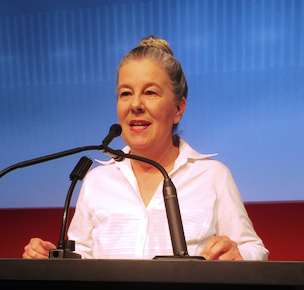- Home
- About Us
- The Team / Contact Us
- Books and Resources
- Privacy Policy
- Nonprofit Employer of Choice Award

 According to recent Association of Fundraising Professionals research, Canadian fundraisers find an increasing number of donors want to designate their giving. Which begs the question - if no donors want to give unrestricted gifts, how are you going to pay to heat the building in the winter? Here's some tips.
According to recent Association of Fundraising Professionals research, Canadian fundraisers find an increasing number of donors want to designate their giving. Which begs the question - if no donors want to give unrestricted gifts, how are you going to pay to heat the building in the winter? Here's some tips.
Package programs covered by unrestricted dollars into designated programs
Many charities run programs, projects, or other worthwhile things using undesignated dollars. Some of these areas can be an opportunity for donations. If you can get a donation for this, that frees up unrestricted money for another purpose (like paying the utility bills). For example, I worked for a large social service charity. In speaking with program staff in different departments, I realized that each department was spending $500-1000 to throw a December holiday party for the clients in their program. So I got an estimate from each department of what they spent on holiday parties and the total was $15,000!
I got to work looking for donors who would have an interest in supporting a holiday party for a particular area. One donor began to give $10,000 each year to run a Thanksgiving meal, a December Holiday meal, a Spring/Easter meal, and a summer Bar-B-Que for homeless adults. Another donor gave $2500 to underwrite two December holiday parties for recent immigrants to Canada. And a third donor gave $2500 for a party for adults with intellectual disabilities. Through this packaging of an existing program, I was able to create a meaningful giving opportunity that also helped the bottom line.
However, in order for this type of an idea to thrive, you need to be sure that the net impact is favorable for both the bottom line of the charity overall and for the department getting the donation. If the department usually spends $500 on their holiday party (as an example), they are not going to be all that excited if you raise $500 (although your lead financial person will be thrilled).
If you can make sure that the program staff have more money for their initiative, but there is still extra money leftover to stick to the bottom line, that will ensure the best internal buy-in. In the example of the holiday party, I might have the program staff get an additional $250 over what they usually spent.
Original situation $1000 Gift - Department budget $750 net to unrestricted budget
| General unrestricted money | Restricted gift to Holiday Party | |
| $500 (Holiday Party) | $750 of gift to party | $250 of gift moved to general unrestricted operating |
| $500 from operating budget moved over to general unrestricted |
Assign all reasonable operating expenses to a program
An alternative example of this program situation is when a donor makes a designated gift, figure out how much that gift will truly cost. If the gift is restricted, the donor shouldn't just cover the hard cost of the program, they should also cover the actual cost of the program in staffing and reasonable overhead. For example, I had a longstanding program in the organization's budget that had a hard cost of $2000 each year. As part of recruiting a donor to give $25,000 for this program for 3 years, I did a rough estimate of the amount of staff time to run this program. So I calculated the cost of the administrative assistant who spends about 40 hours on this program doing things like organizing the catering, hiring the wait staff. I also calculated that it was about 10 hours for the maitanance staff for set-up, tear down, and clean up for this program. In this way, I identified about $3000 in soft costs for the program. I amde sure that the budget that I showed the donor included administration and explained to her why that money truly helped run the progam. As a result, that gift provided $5000 in relief to the operating budget each year for 3 years. The remaining $10,000 went to enhancing the program itself.
Go sideways
There are areas of fundraising that lend themselves more to unrestricted gifts. Special events often can be a good source of undesignated money. Lotteries, while having a lot of risk, can also be a good source of unrestricted cash. In addition, a well-run sponsorship that is well thought-through, can be a way to build in a good source of revenue that also builds brand awareness,
You will not always be able to get an unrestricted gift from every donor every time. By being strategic about your fundraising mix, being smart in including reasonable administrative costs directly related to a gift, and with being strategic about how to redeploy existing programs which may be of interest to donors, you can help those limited unrestricted dollars go further.
Ann Rosenfield, MBA, CFRE is the Editor of Hilborn Charity eNews and a front-line fundraiser. She has been working on strategies to help ensure charities have enough undesignated money for over 20 years. This is, in part, because she likes it when her office has heat and electricity.